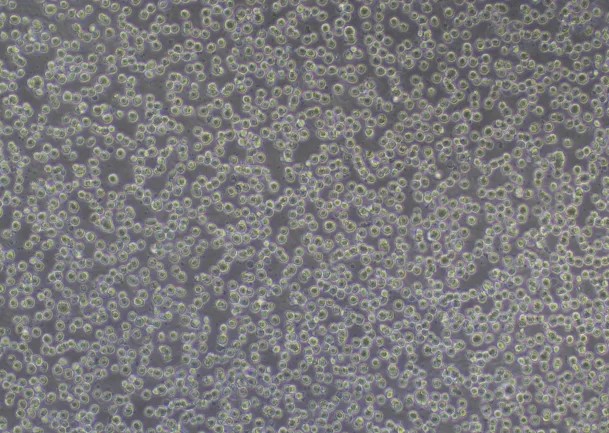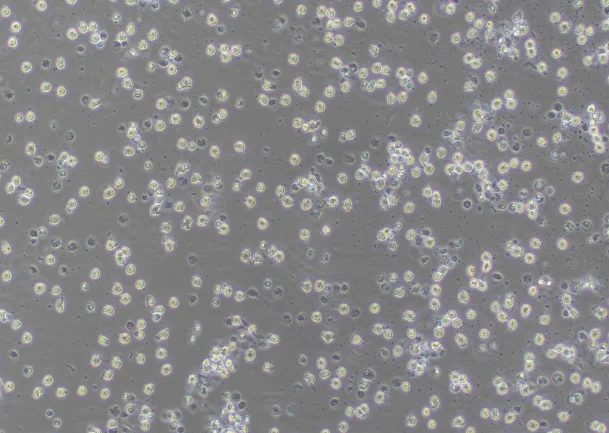Expert Insights | What to Do if RAW 264.7 Cells Differentiate Due to Poor Culturing?


Expert Insights | What to Do if RAW 264.7 Cells Differentiate Due to Poor Culturing?

RAW 264.7 Cells (Mouse Mononuclear Macrophage Leukemia Cells) are derived from male mice induced by the Abelson murine leukemia virus. Due to their phagocytic and endocytic activities, these adherent cells are considered an ideal in vitro model for macrophages. RAW 264.7 cells are also used in natural product screening, osteoclast research, microbial immune modulation, and more. Additionally, gene-editing RAW 264.7 cells can be utilized to validate inflammatory targets, study macrophage gene functions, etc.
Culturing cells properly is essential for conducting cell experiments. Those who have cultured RAW 264.7 cells should know that these cells are very delicate and easily differentiate (develop small protrusions) during culturing. If not addressed promptly, differentiation can delay the experimental progress. To culture RAW 264.7 cells effectively, every step in the culture process is crucial. With years of cell culturing experience, Ubigene has prepared the exclusive manual to guide you on how to reduce cell differentiation.
What Are RAW 264.7 Cells?
Before jumping into expert insights, let's review some basic information about RAW 264.7 cells.
| Cell Name | RAW 264.7 (Mouse Mononuclear Macrophage Leukemia Cells) |
| Growth Characteristics | Adherent |
| Cell Morphology | Round; during culture, a small proportion (10%) of spindle-shaped, multi-angular differentiated cells is considered normal. |
| Cell Culture Medium | DMEM+10%FBS+1%P/S; |
| Culture Environment | CO2 : 5%; Temperature: 37°C |
| Medium Change Frequency | Daily |
| Passage Ratio | 1:3-1:6 |
Looking for more high-quality wild-type cell lines with reliable STR authentication and low passage history? Click to explore our 1000+ wild-type cell line collection>>>

RAW 264.7 Cell Image (Normal Growth)
Cell Thawing Protocol
1) Preparation: warm up the complete culture medium in 37°C water bath for 30 mins;
2) Inside the ultra-clean bench, pipet 7 ml of complete medium into a 15 ml centrifuge tube;
3) Take out the cryopreserved vial from dry ice, hold the cap with forceps, quickly thaw cells in a 37°C water bath by gently swirling the vial (Note: keep the cap out of the water). In about 1 minute, it would completely thaw;
4) Transfer the thawed cells to the prepared centrifuge tube with complete medium, close the lid, and centrifuge at 1100 rpm for 4 mins at room temp to collect the cells;
5) Inside the ultra-clean bench, carefully remove and discard the supernatant. Resuspend cell pellet with 1ml of complete medium and then transfer to a T25 flask (or 6 cm plate) containing 4 ml of complete medium, label the flask/plate with cell name, date and passage no., incubate the flask in a 37℃, 5%CO2 incubator.
6) Observe the cell status and adhesion the next day.
Key Points for Thawing
1. The thawing process should not be too long, preferably completed within 15 minutes.
2. If the cell status is poor or there is a lot of differentiation 24 hours after thawing, it is recommended to thaw the cells to a 6-well plate based on the cell count.
3. Do not thaw the cells directly into a T75 cm2 flask or a 10 cm plate.
Cell Passaging Protocol
1) When the confluence reaches 70-80%, passage can be performed at a ratio of 1:3-1:6;
2) Remove the old culture medium, gently pipet the cells into single cells with fresh complete culture medium, observe under a microscope if the cells are single cells;
3) Passage the cells according to a certain ratio, and observe the cell status the next day.
Key Points for Passaging
1. Do not use trypsin to digest these cells.
2. Differences in serum quality may affect cell growth. It is recommended to use premium serum for culture. If premium serum is not available, you can increase the serum concentration for culture.
3. Passage can improve the proportion of cell differentiation. Due to the rapid growth of RAW 264.7 cells, passage can generally be done in 2-3 days. Therefore, passages should not exceed three days; exceeding this may make the cells more prone to differentiation. Differentiated cells adhere firmly to the surface and are difficult to detach, so it is essential to control the seeding density for each passage.
4. If the proportion of differentiated cells is significant, when the cells reach 70-80% confluence, use a single-channel pipette to gently pipet the undifferentiated round cells and transfer them to a new culture plate and pipet them into single cells (note the seeding density, not too sparse). Pipet only once to avoid the differentiated cells also collected for further culture, and through this operation in 2-3 passages as described above, normal cells can be obtained.
Important Tips With An Example
If there is a high proportion of differentiated cells in a T25 flask, gently pipet the surface of the cells with 2-3 ml of medium, be careful not to create air bubbles. Collect the undifferentiated cells and transfer them to a suitable plate. Under a microscope, check if the cells are single cells. If they are, place them in the incubator. In about 3-4 hours, the cells will adhere to 80-90%, and through observation at this time, if most cells are individual and round, the cluster formation and differentiated cells should be redued in the next day.

RAW 264.7 Cell Image (Differentiated)
Cell Cryopreservation Protocol
1) Same as Protocols of cell passaging, pipet the cells to a single-cell suspension, and transfer to a centrifuge tube;
2) Mix well by pipetting and perform cell counting;
3) Centrifuge at 1100 rpm for 4 mins at room temp. After centrifugation, remove and discard the supernatant, and resuspend the cells with 4℃ pre-cooled cryopreservation medium, then add cryopreservation medium to adjust to the required density (1x106-1x107 cells/ml);
4) Aliquot the cell suspension to cryovials as 1 ml/tube, place the cryovials in 4℃ pre-cooled Freezing Container, then put the container in an ultra-low temperature freezer;
5) Stay overnight, transfer the cryovials to liquid nitrogen for long-term storage.
Conclusion
Proper handling of RAW 264.7 cells is essential to maintain their viability and avoid undesired differentiation. From thawing and passaging to cryopreservation, following a consistent RAW 264.7 culture protocol ensures optimal growth and reliable experimental results. These murine macrophage-like cells remain a powerful tool in immunological and inflammation-related research when cultured correctly. After learning from the shared expert insights, you should feel more capable of addressing the differentiation issue with RAW 264.7 cells. If you have more questions, feel free to discuss it with our experts anytime!
Ubigene provides RAW 264.7 cells that are STR-authenticated, mycoplasma-free, and validated in the ExPASy Cellosaurus database, guaranteeing authenticity and experimental reliability. With optimized cryopreservation and culture conditions, our cells offer high viability and stable morphology for your studies.
Need to customize RAW 264.7 cells with CRISPR for functional studies? Learn more about our gene-editing services>>>


